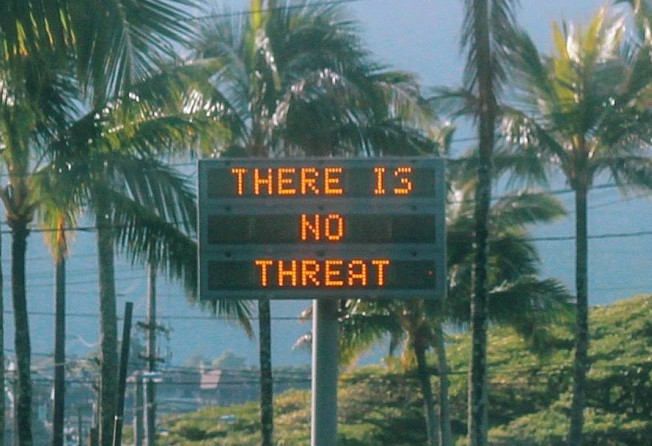Make attack alerts as foolproof as possible

Japan and the United States should have sturdy alert systems given the threats posed by North Korea. Recent false alarms sent from a Japanese television station’s social media account and the state of Hawaii showed that mistakes can too easily happen.
Corrective measures have been put in place, but the confusion, panic and disorder that resulted proved preparedness is not as it should be. Amid so many uncertainties, the incidents are lessons for China and other governments in the region to ensure that planning and testing for emergencies is robust.
Japanese, their nation prone to natural disasters, are used to emergency drills and alerts. North Korea’s firing of two missiles over Hokkaido last year has increased tensions. How many of the 300,000 followers of public broadcaster NHK’s account responded to its erroneous warning to seek shelter as another missile appeared to have been fired is not known. But the mistake was retracted and an apology issued within minutes and the member of staff responsible quickly identified. Human error can never be discounted, even in a nation as prepared as Japan.
Hawaii is similarly on edge now that the North has fired missiles capable of hitting the US island and reaching the American mainland. The accidental activation of the alert system sent many residents scrambling, with some even hiding in sewers.
While the panic may be understandable, the circumstances in which the emergency came about – the clicking by an employee of the state’s emergency management agency on the wrong button on a computer screen – and the manner in which it was handled, is not. While the agency announced on Twitter 10 minutes later that there was no threat, it took 38 minutes to send the message to mobile phones. New measures have been put in place to prevent a repeat, among them making initiating an alert more complex.
The possibility of terrorism or a nuclear conflict can never be discounted. Every eventuality has to be prepared for through planning, training and testing. But as critical as reacting promptly to an emergency is, the sending out of alerts should not be so easy that they can be transmitted by mistake.